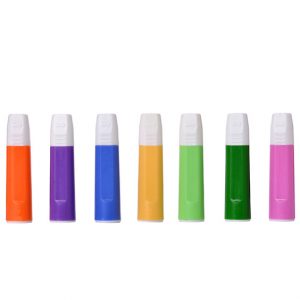 A safety lancet is a medical device used to obtain a small sample of blood for testing or for other medical procedures. It is designed to minimize the risk of injury to the person being tested and to the healthcare provider administering the test. Safety lancets typically have a retractable needle that is covered before and after use, reducing the risk of needlestick injuries and cross-contamination.
A safety lancet is a medical device used to obtain a small sample of blood for testing or for other medical procedures. It is designed to minimize the risk of injury to the person being tested and to the healthcare provider administering the test. Safety lancets typically have a retractable needle that is covered before and after use, reducing the risk of needlestick injuries and cross-contamination.
Safety lancets come in different sizes and designs, with different needle lengths and gauges to accommodate different testing needs. They are commonly used for blood glucose testing for people with diabetes, for monitoring blood hematocrit levels in patients with anemia, and for a variety of other medical tests and procedures that require a small sample of blood.
There are various types of safety lancets available in the market, including manual lancets, spring-activated lancets, and automatic lancets. The choice of safety lancet will depend on the specific needs of the patient and the healthcare provider, as well as local regulations and guidelines.
The safety mechanism of a lancet refers to the features that are built into the device to minimize the risk of injury or contamination. There are several different types of safety mechanisms used in lancets, including:
- Retractable needle: The needle is covered before and after use, reducing the risk of needlestick injuries and cross-contamination.
- Passive safety: The lancet is designed to automatically retract the needle after use, reducing the risk of injury and contamination.
- Active safety: The user must take an active step, such as pressing a button or pressing the lancet against the skin, to activate the needle. This reduces the risk of accidental injury or contamination.
- Lock-out mechanism: The lancet is designed to prevent reuse, reducing the risk of cross-contamination and the spread of blood-borne infections.
- Needle protection: The lancet is designed to cover the needle after use, preventing contact with the contaminated needle.
These safety mechanisms help to minimize the risk of injury and contamination, making lancets a safe and convenient tool for medical professionals and patients alike. The specific safety mechanism used will depend on the type of lancet, local regulations, and the needs of the patient and healthcare provider.
There are two main types of lancets: manual lancets and automatic lancets.
- Manual lancets: Manual lancets are the simplest type of lancet and typically have a fixed needle that is manually poked into the skin to obtain a blood sample. They are often used in healthcare facilities and are designed to be used only once to minimize the risk of cross-contamination.
- Automatic lancets: Automatic lancets are more sophisticated than manual lancets and use a spring mechanism to quickly and efficiently penetrate the skin to obtain a blood sample. They are often used by patients who need to regularly test their blood glucose levels, and they usually have a retractable needle that is covered before and after use, reducing the risk of injury or cross-contamination.
Both types of lancets have their own unique benefits and drawbacks, and the choice of lancet will depend on the specific needs of the patient and the healthcare provider, as well as local regulations and guidelines.
The safety lancet market has seen several recent trends, including:
- Increased demand for safety: With a growing awareness of the risks associated with needlestick injuries and cross-contamination, there is a growing demand for safer and more user-friendly lancets.
- Innovations in safety technology: Companies are investing in research and development to create lancets with improved safety features, such as retractable needles, lock-out mechanisms, and needle protection.
- Growing demand for blood glucose monitoring: With the increasing prevalence of diabetes and other chronic conditions, there is a growing demand for lancets specifically designed for blood glucose monitoring.
- Increased focus on patient comfort: Lancets are being designed with patient comfort in mind, with features such as ergonomic design, adjustable depth settings, and minimal pain.
- Growing use of safety lancets in developing countries: As healthcare infrastructure improves in developing countries, there is a growing demand for safe and reliable lancets in these regions.
These trends are likely to continue as the safety lancet market continues to grow and evolve in response to changing patient and healthcare provider needs.
There are several major companies in the safety lancet market, including:
- BD (Becton, Dickinson and Company)
- Roche Diagnostics
- Terumo Corporation
- Abbott Laboratories
- Johnson & Johnson
- Medtronic
- Nipro Corporation
- Sino Medical-Device Technology Co. Ltd.
- Arkray Inc.
- ACON Laboratories, Inc.
These companies are among the leading suppliers of safety lancets and are known for their innovative products, high-quality standards, and commitment to patient safety. The specific companies operating in the market may vary depending on the region, as well as local regulations and guidelines.
Contact:
David Correa
USA/Canada (Toll Free): +1-800-792-5285, +1-503-894-6022
help@alliedmarketresearch.com

